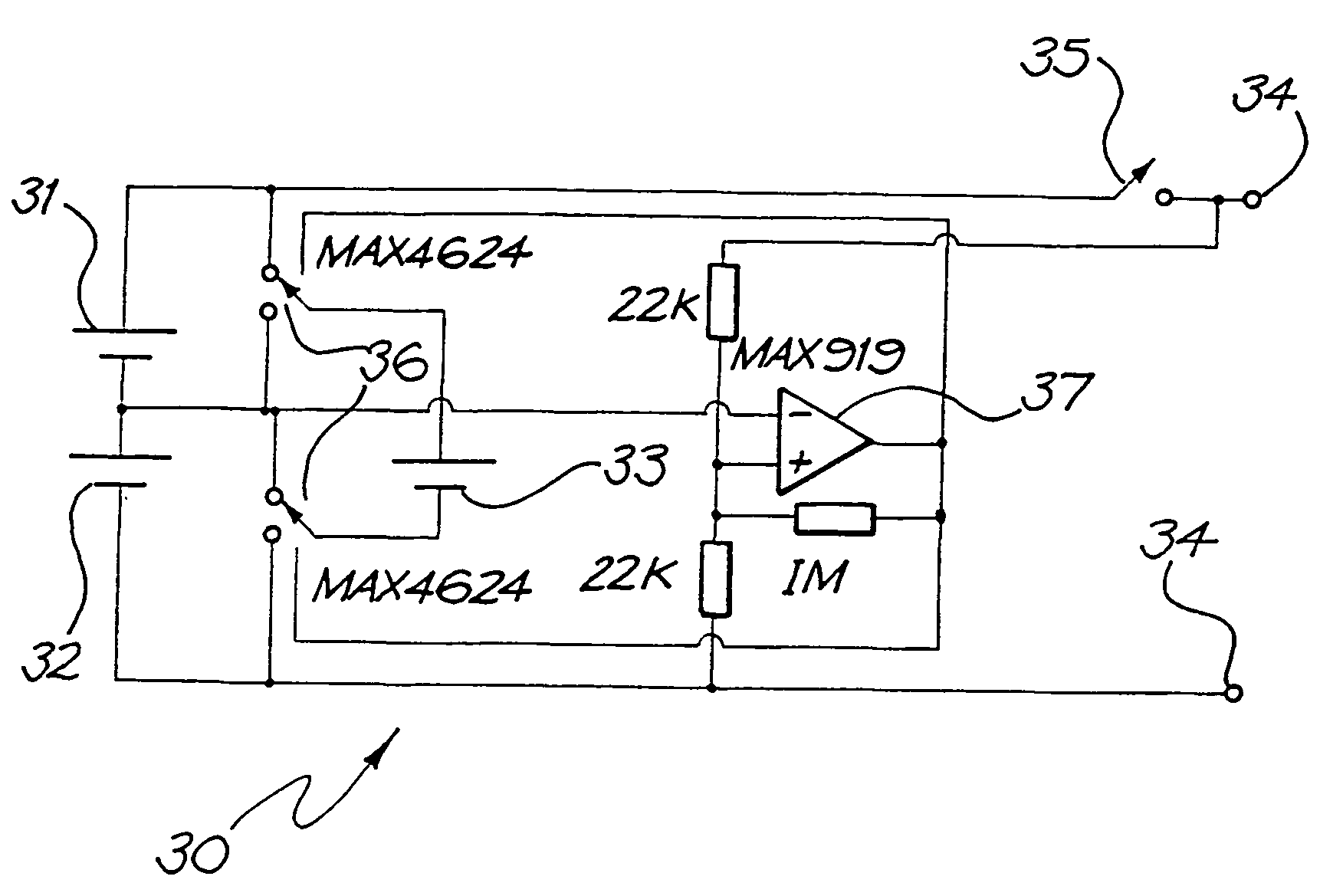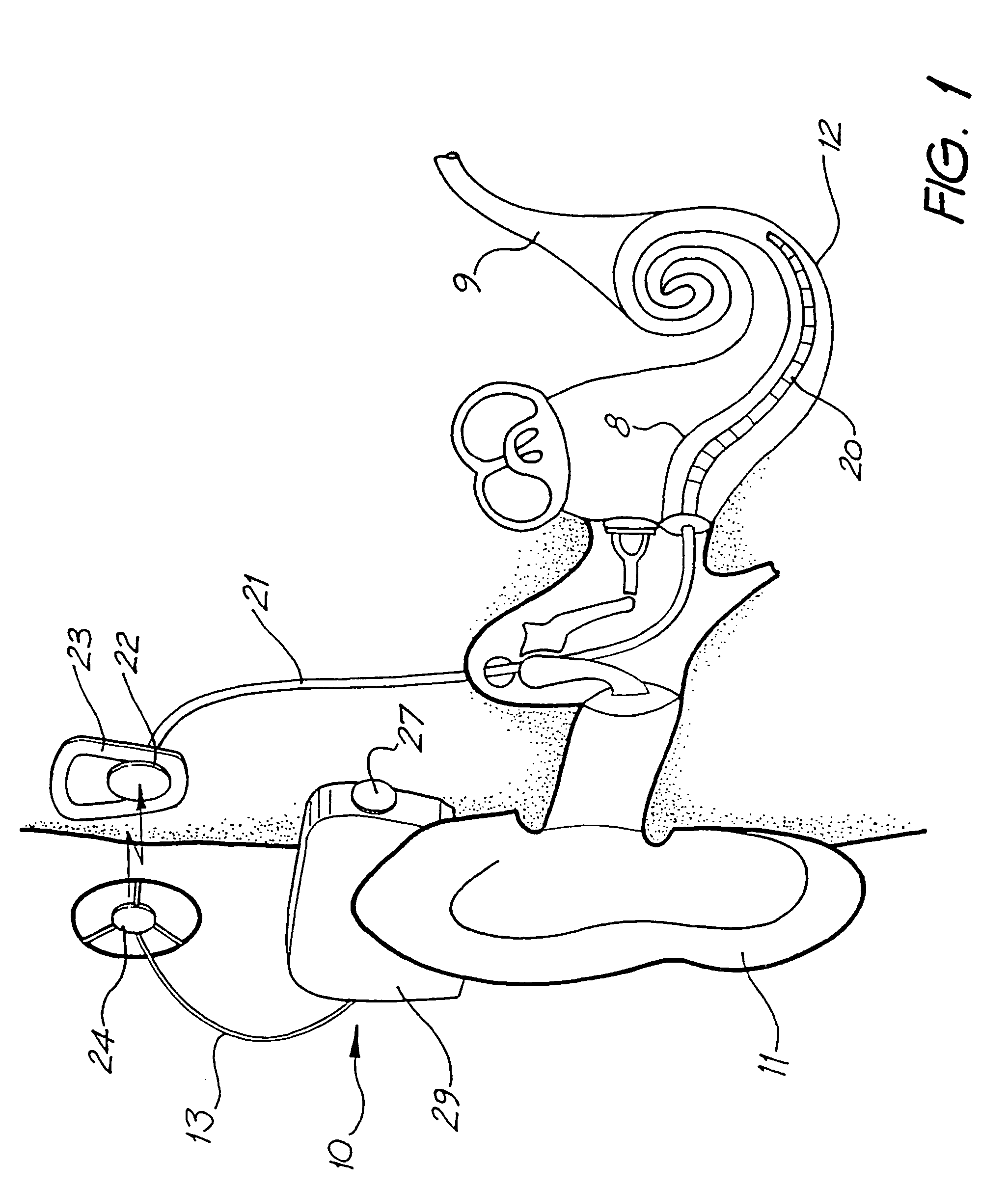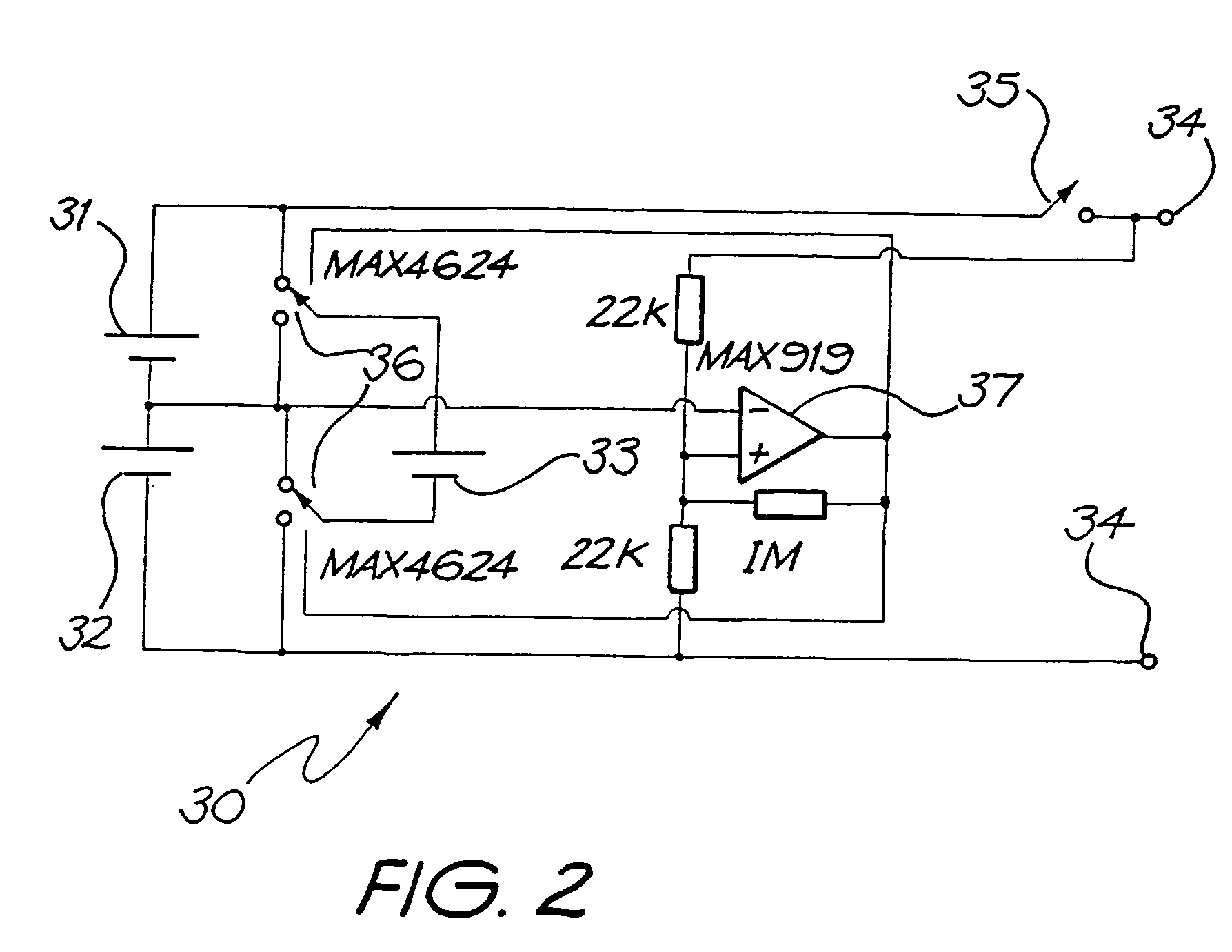Power supply for a cochlear implant
a cochlear implant and power supply technology, applied in the field of cochlear implants, can solve the problems of high energy density, restrictions on the type and dimension of power supply that can be used, and people are therefore unable to derive suitable benefits from conventional hearing aid systems, so as to achieve the effect of maximising the performance of devices
- Summary
- Abstract
- Description
- Claims
- Application Information
AI Technical Summary
Benefits of technology
Problems solved by technology
Method used
Image
Examples
Embodiment Construction
[0062]An example of a device powered by the power supply system of the present invention can be seen in FIG. 1.
[0063]One embodiment of a cochlear implant utilising the present invention is depicted in FIG. 1 and consists of two main components, namely an external component 10 including a speech processor 29, and an internal component including an implanted receiver and stimulator unit 22.
[0064]The external component 10 includes an on-board microphone 27. The case of the external component 10 is constructed and arranged so that it can sit on the outer ear 11 of the implantee. The case of the external component is also constructed so that it contains a power supply in accordance with the present invention. The power supply provides the power for the entire implant system.
[0065]A cable 13 extends from the case of the external component 10 to an external transmitter coil 24 which transmits electrical signals to the implanted unit 22 via a radio frequency (RF) Link.
[0066]The implanted co...
PUM
 Login to View More
Login to View More Abstract
Description
Claims
Application Information
 Login to View More
Login to View More - R&D
- Intellectual Property
- Life Sciences
- Materials
- Tech Scout
- Unparalleled Data Quality
- Higher Quality Content
- 60% Fewer Hallucinations
Browse by: Latest US Patents, China's latest patents, Technical Efficacy Thesaurus, Application Domain, Technology Topic, Popular Technical Reports.
© 2025 PatSnap. All rights reserved.Legal|Privacy policy|Modern Slavery Act Transparency Statement|Sitemap|About US| Contact US: help@patsnap.com



